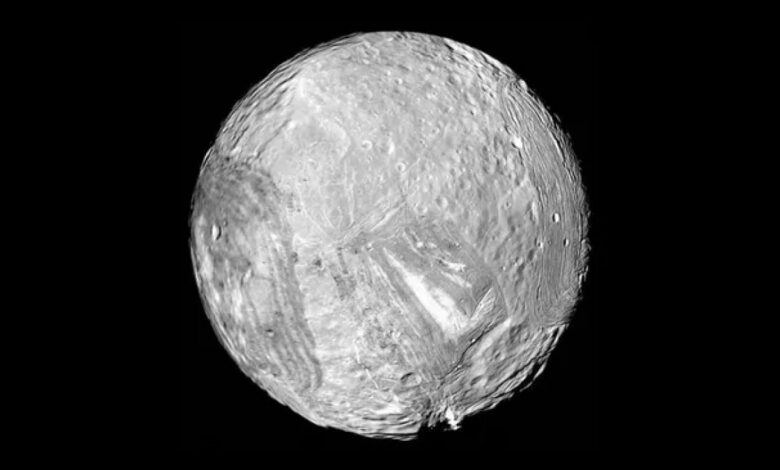NASA’s Voyager 2 finds clues about the ancient ocean on Uranus’ moon Miranda

Recent images from NASA’s Voyager 2 have reignited interest in Miranda, one of Uranus’ smaller moons. New research shows that Miranda once had an ocean beneath its icy surface. Scientists have long believed that moons of gas giants like Jupiter and Saturn – such as Europa and Enceladus – could hide hidden oceans. Now attention is turning to the moons of Uranus as potential locations for these mysterious ocean worlds. Using data collected by Voyager 2 in 1986, a team of planetary scientists, led by Tom Nordheim of the Johns Hopkins Applied Physics Laboratory, recently reanalyzed images of Miranda’s distinctive geological formations.
The images show a diverse landscape with rutted terrain, rugged cliffs and large impact craters. To determine the origins of these unique features, the team created computer models to simulate Miranda’s internal structure. Their findings show that a large ocean could have existed about 100 to 500 million years ago. It could have lay beneath about 30 kilometers of surface ice and reached depths of up to 100 kilometers.
Complex geology sheds light on Miranda’s icy past
According to the latest research published in The Institude of Physics (IOP), Miranda, with a diameter of about 235 kilometers, is relatively small, making the potential discovery of an ocean surprising. According to Nordheim, this revelation expands the idea that some moons around Uranus may hold more secrets than previously thought. He notes that Miranda’s orbital interactions with nearby moons could have generated enough frictional heat in the moon’s interior to keep this ocean liquid for millions of years. This ‘tidal heating’ phenomenon is similar to the force of gravity that keeps the European ocean around Jupiter from freezing.
Unanswered questions await future exploration
While Voyager 2’s data provides tantalizing insights, confirming Miranda’s ocean remains out of reach without a dedicated mission. For scientists like Nordheim, these clues make the possibility of a return mission to Uranus even more exciting. By studying the icy moons up close, scientists hope to unravel more mysteries about the formation and evolution of ocean worlds in the outer solar system. For now, researchers continue to maximize the data from the Voyager 2 mission, hoping it may hold even more answers about Uranus’ icy, distant moons.




